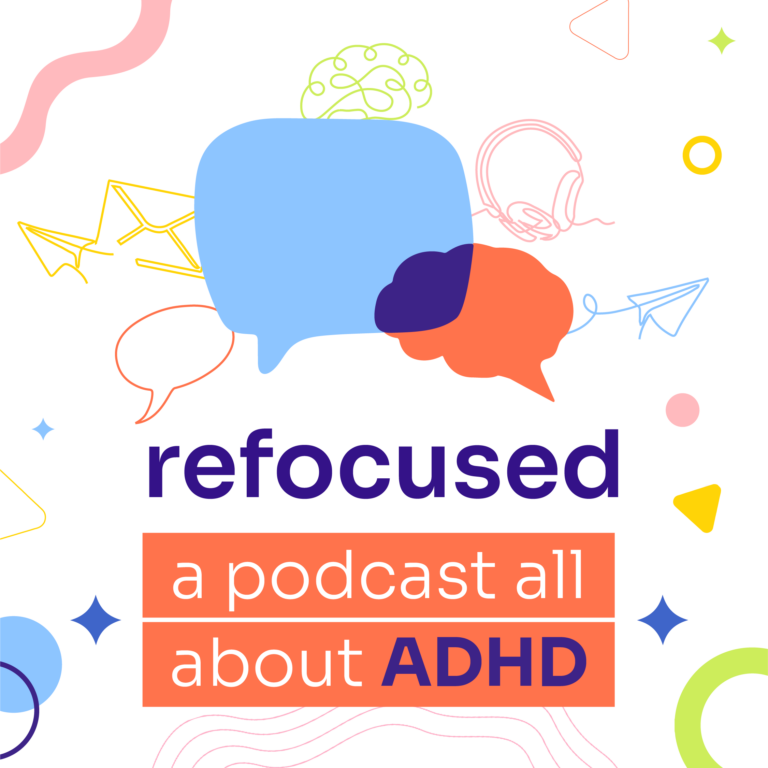Whether it’s the first day of first grade or the first semester on campus, everyone has experienced that “back-to-school feeling” at some point. It may start as a mix of healthy anticipation and optimism for what lies ahead, but once you’ve bought that new backpack and picked out the first-day outfit, those familiar jitters might pop up. “I can’t wait to get back and see all my friends again” can quickly turn to “What if I don’t know anyone in my class?” or “How am I going to get through all of these books?”


For those experiencing symptoms of ADHD and/or anxiety, those emotions can feel magnified and overwhelming, threatening to set the new school year off on the wrong foot. What should be a time of optimism and hope can become a flood of uncertainty and agitation.
Fortunately, there are ways for students of all ages to address these challenges and thrive in the classroom and beyond.
Talk to the Teacher
Teachers can be some of the strongest allies when it comes to managing students’ ADHD and anxiety at school. School-aged children spend an estimated 25% of their time with adults other than their parents, like teachers or coaches.
That’s a significant amount of time during an incredibly influential period, meaning, after parents, teachers are among those best-positioned to make a positive impact on a child who may be facing obstacles.
Try to reach out to your child’s teacher or your professors before the first day to build the foundation for your relationship before things pick up and the pressure of the new school year begins. This way, you’ve started things off with a great first impression of someone who wants to flourish and is proactive in addressing challenges. Regular check-ins and open communication will go a long way to ensure the partnership remains successful.
Establish a Routine
Thoreau said: “Routine is a ground to stand on, a wall to retreat to; we cannot draw on our boots without bracing ourselves against it.” Routines are rooted in the familiar, and familiarity brings a sense of comfort and predictability, which is especially helpful for students navigating school with ADHD or anxiety. While the school day is built on routine, it’s before and after school where students benefit most from additional structure.
An established morning routine can provide an easy transition into the day and help build competence and independence. Completing some tasks the night before (picking out clothes, packing the backpack, preparing lunch) can make for even smoother sailing come morning.
Homework is the bedrock of most afternoon routines for students, which means opportunities to self-motivate through reward. Knowing that finishing homework is the only thing standing between video games or time with friends can add a much-needed spark to tackle the work without procrastination.
Explore Accommodations
Beyond the steps you can take at home or with teachers, federal laws provide services and accommodations for students with disabilities such as ADHD or anxiety. The Individuals with Disabilities Education Act (IDEA) and Section 504 of the Rehabilitation Act of 1973 both guarantee that students with disabilities receive equal access to education and school activities. If you or your child could benefit from accommodations under these laws, writing a letter of inquiry to the school’s principal is an excellent first step for exploring options.
Consider Treatment
It’s natural to experience anxiety or nervousness when starting something new. But if those feelings are getting in the way of making the most of this season of your life, think about exploring some sort of treatment, whether that be therapy, coaching, or medication. You might also consider taking a snapshot of your mental health to learn more about your challenges or getting an official diagnosis so that you can understand whether you’re struggling with ADHD, anxiety, or both.
Embrace It
We only get so many school years, so approach the start of one as an opportunity to do what may seem obvious: learn. Yes, calculus, composition, and early U.S. history are all important, but perhaps most important is learning how to navigate adversity and excel in a way that works best for you.
Sources:
https://chadd.org/for-parents/tips-for-talking-to-teachers-about-adhd/
https://d393uh8gb46l22.cloudfront.net/wp-content/uploads/2018/12/ADHD-School-Toolkit.pdf





